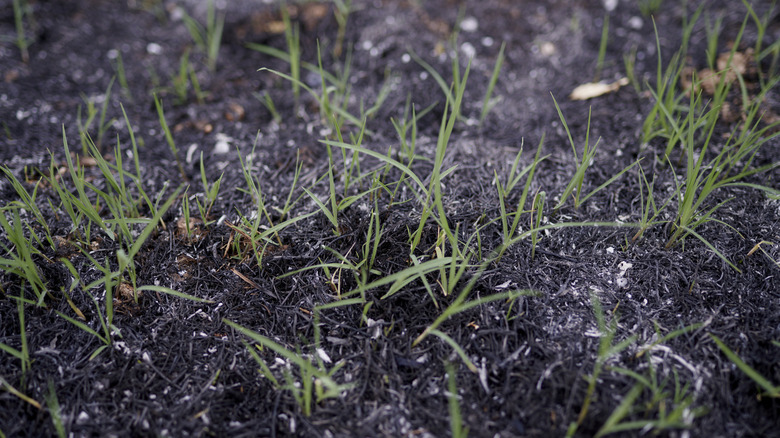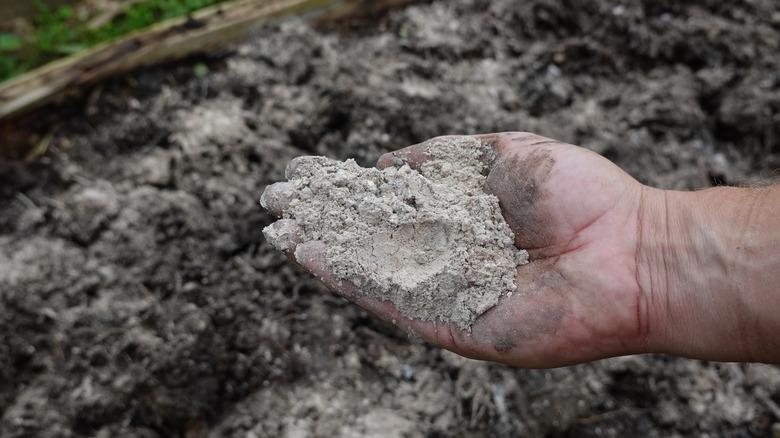The Unexpected Reason Why You Should Start Putting Wood Ash On Your Lawn
We may receive a commission on purchases made from links.
Like most plants, grass needs nutrient-rich soil to stay green and lush. In most cases, this involves watering and fertilizing it regularly. The best time to fertilize your lawn depends on the type of grass you're growing, and some of the best products for doing so may be hanging out in your medicine cabinet or even your fireplace. Epsom salt can make your grass greener by providing a magnesium boost, but your lawn may need other nutrients as well. To increase its levels of potassium, phosphorous, sulfur, and more, try adding wood ash from a fire pit or wood stove. As long as it hasn't been painted or treated with chemicals, this fireplace waste can also be used to raise the pH level of soil that's too acidic for your grass.
Josh Gardens, the master gardener who runs the Instagram account @theplanttechie, uses fireplace ashes to supplement soil with a variety of beneficial substances. "Since wood ash is the mineral residue left after wood burns, it's rich in potassium, calcium, magnesium, and trace nutrients," he told Outdoor Guide in an exclusive interview, adding that potassium is "one of the three macronutrients found listed on most fertilizers (the K in NPK)." Potassium helps grass seeds grow strong, verdant stems and roots that reach deep into the soil. It's essential for all plants because it helps them take in water and turn sunlight into energy that fuels their growth. Calcium encourages grass to form durable cell walls, which are important for fighting off diseases. It also helps the soil's pH level stay high enough for grass to thrive.
How to use wood ash on your lawn
Wood ash isn't just a low-cost fertilizer. As Josh Gardens explains, it's also "useful for adjusting soil pH thanks to its alkaline nature." According to the University of California's Division of Agricultural Sciences, the pH of wood ash often falls between 10.0 and 12.0. This means it can make acidic soil neutral or even alkaline, depending on how much you use. When the soil's pH level drops below 5.5, your grass may turn brown and struggle to grow. Even if you're not seeing signs of a pH imbalance, measure your soil's nutrient and pH levels before introducing wood ash. Your local cooperative extension office may offer soil testing, or you can buy a product such as the MySoil test kit.
Testing your soil will help you decide how much wood ash you need. This can keep you from providing too much of a good thing — like an overabundance of potassium, which discourages grass from absorbing other nutrients. "Moderation is key to prevent overloading the soil with nutrients that could negatively impact plant growth," Josh says. Many homeowners fertilize their lawns during the spring and summer, but Josh prefers to apply wood ash in the winter "so it can gradually settle into the soil before the growing season." Once a year, apply up to 20 pounds of ash for each 1,000 square feet of lawn. Spread it as evenly as possible and avoid wind, which can quickly undo your work. Josh also recommends watering the grass afterward, which helps the ash "mix well with the soil."

